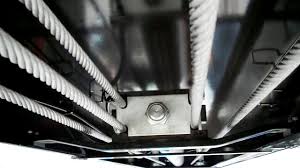AUTO LIFT FAQ'S- INSTALL PREP AND MAINTENANCE
- Angel Shaffer
- Mar 16, 2020
- 2 min read
There are many questions to consider when preparing to install an automotive lift. Each lift has specifications for their own build, placement, etc., but here are a few general guidelines to assist you, whether you are adding more equipment or building a new shop:
1. HOW MUCH CAPACITY DO I NEED IN A LIFT?
When deciding upon a lift, a general rule of thumb is to find a car lift that can operate with at least 25-30% more weight than your heaviest vehicle. This will help to ensure stability and security for any vehicle you intend to work on.
Here is a list of the most popular automotive lift types.
2. WHAT ARE THE FLOOR REQUIREMENTS?
The concrete you intend to build on should be as level as possible, without any slopes beneath the lift. Car lifts vary in the necessary concrete depth, but typically range from 4-8 inches and 3000 psi. Please check the specifications for the lift you intend to install.
3. HOW MUCH CEILING HEIGHT DO I NEED?
Again, most of the measurements for installing a lift depend on that particular lift. Check online or within the install packets for specific measurements.
4. HOW MUCH DISTANCE DO I NEED FROM CONCRETE CUTS?
A lift should be installed with the base plates at least 6" from any concrete cut or crack.
5. HOW MUCH DISTANCE DO I NEED FROM A FRONT WALL OR STRUCTURE?
Allowing at least 10-15 feet in front of most lifts provides room for most vehicle clearances, as well as proper work space.
BASIC MAINTENANCE AFTER INSTALL
6. HOW MUCH MAINTENANCE IS NECESSARY?
A simple, monthly check-up is beneficial for all equipment. This includes the obvious physical features, as well as adjusting cables and checking the hydraulic systems. Synchronizing cables tend to stretch over time and may need regular adjustment. It is also necessary to check for cable fraying which will eventually become a safety hazard.
A more in-depth, annual inspection by a certified individual is also important in maintaining a safe work environment.
7. WHY DO THE SWING ARMS BOUNCE WHEN TRAVELING UP OR DOWN?
Air inside the hydraulic system can cause instability in the posts or swing arms. This can be dangerous! Try bleeding the cylinders or call a certified inspector to ensure the safety of the lift.
8. HOW DO I BLEED A 2-POST?
When there is air in the cylinders of a 2-post, first raise and lower the lift without weight to inspect for any other issues and assess the situation. Next, lower the arms to about 1 foot off the ground, or onto the first locks. Slightly open the Allen bleeders at the top of the cylinders until there is no bubbling obvious in the fluid. Tighten the bleeders back in place and assess lift operation.
STILL HAVE QUESTIONS? Contact us to find out more about lift installs, operations, or maintenance.



Comments